Why Do Slow Cooker Food Recipes Taste Bland?
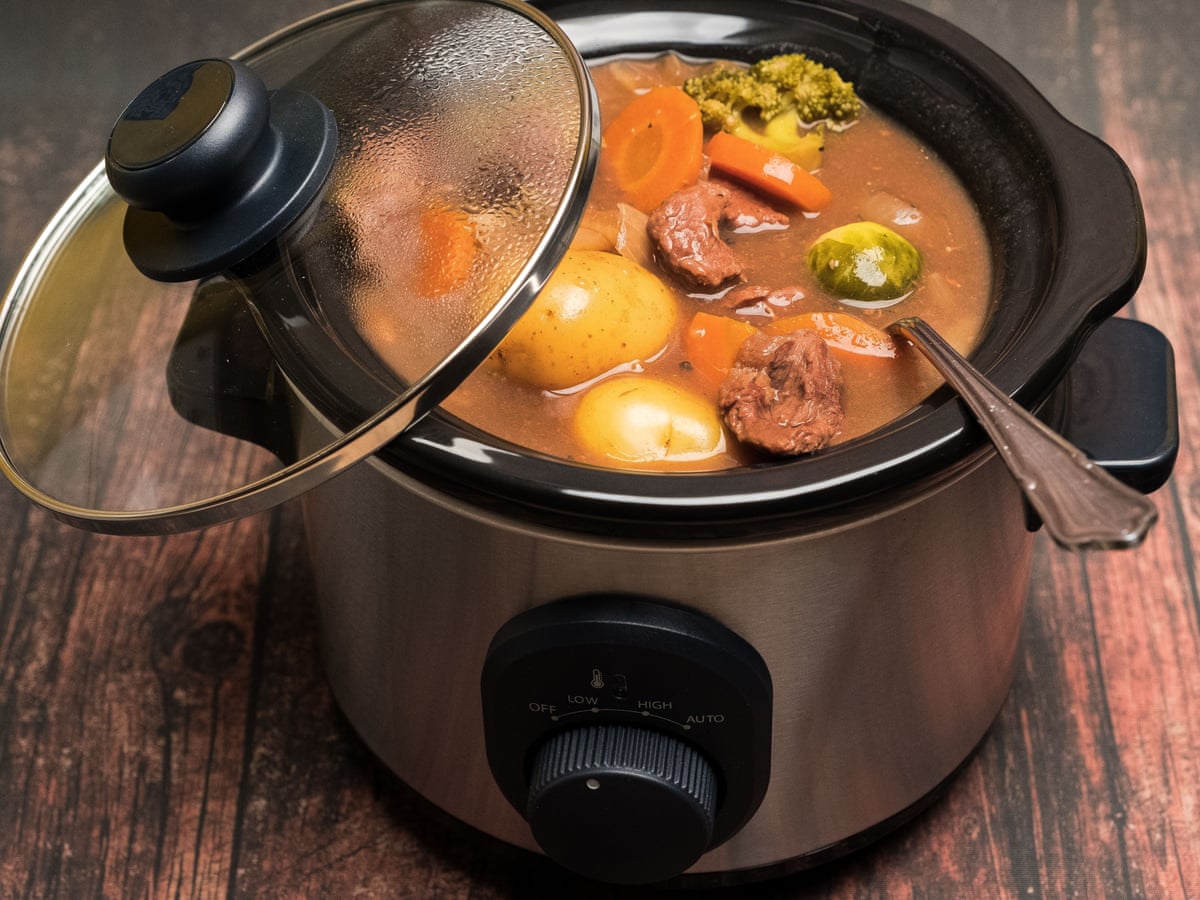
So I began to ponder why slow cooker food tastes boring and what I might do about it.
Here are some of the things I discovered while conducting some delicious research:-
Because it’s difficult to estimate the correct quantity of salt for one large pot, slow cooker meals are frequently under seasoned. However, substituting water for broth, not sautéing the components first, and using too much cooking liquid or lean meats results in insipid cuisine.
That, however, is only the start. Because of how easy it is, I’m not ready to give up our crock-pot. There are a few things you can do to improve the taste of your slow cooker dishes.
Let’s start this party!
What causes food to be bland in a slow cooker?
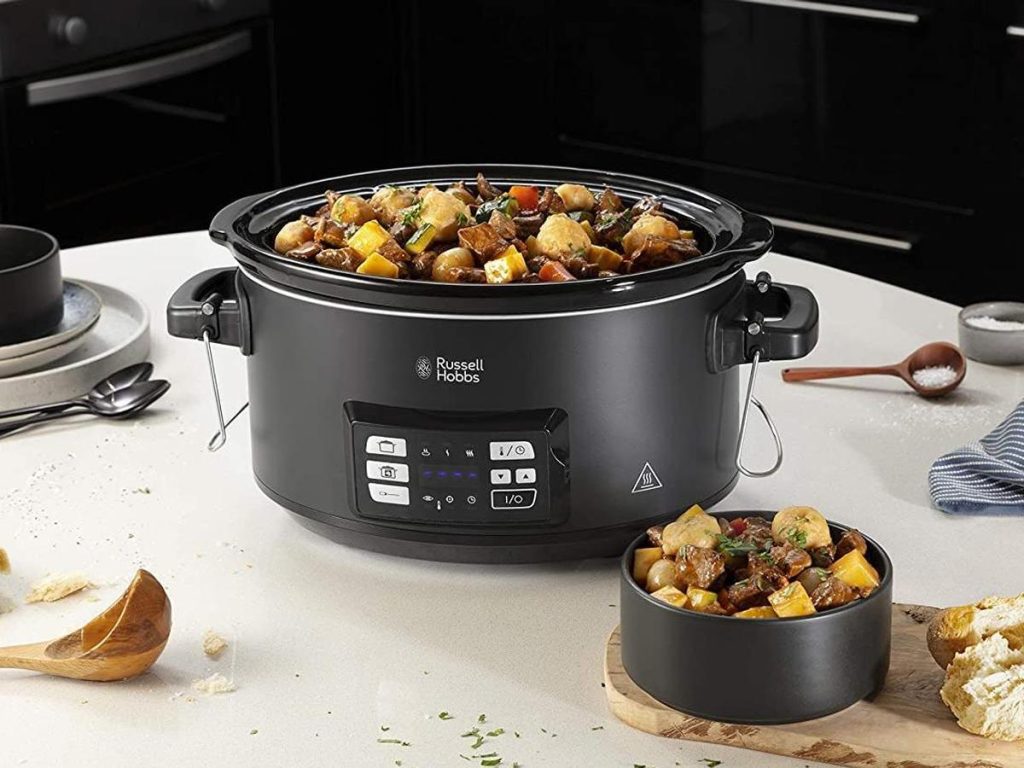
A slow cooker, such as a Crock-Pot or another brand, is made for convenience.
We plug everything in, turn it on, and either go to work or sleep while it works its magic. When we wake up or get home from work, the food is hot, ready to eat, and fully cooked.
AND it’s all done in one pot, so there’s only one thing to clean (and the bowl and lid are dishwasher safe). It’s pretty practical in our fast-paced environment. On the other hand, my wife despises it since she claims the food is flavorless and bland.
Is it necessary to choose between convenience and flavor, or May we have both? Yes, we can have it all, I say. But first, let’s look at WHY a slow cooker can provide bland results.
There are three significant reasons why slow cooker food can be bland:
- When you throw everything into one giant pot, it isn’t easy to know how much salt to add.
- We frequently throw all of the ingredients into the Crock-Pot raw to get it done as quickly as possible.
- Instead of broth, we use water as our liquid.
You’d season (salt and pepper) as you go if you were creating a meal from scratch the old-fashioned way.
How about some vegetables sauteed? Season with a pinch of salt and pepper. Do you want to cook some beef? Yup. Season with salt and pepper. How about making a sauce? Yes, you’d season it with salt and pepper as well.
You would season each item as you went along, and you would, of course, taste as you went. We tend to under-season since we are afraid of using too much salt if we drop it all in and hope for the best.
After all, you’d probably use 1-2 tablespoons of salt in each of those processes. However, combining all of this at once appears to be excessive. Another thing we miss out on when we throw raw vegetables and meat into a slow cooker and put it on is the caramelization and flavor merging that occurs when we saute the same ingredients in a skillet with oil or butter.
There’s a lot of misunderstanding about salt, even though it’s such a simple substance.
You won’t want to miss this post if you’ve ever wondered if pink Himalayan sea salt is a miracle product or a con.
Last but not least, we have a habit of substituting water for broth when cooking.
The broth is always tastier than water, so experienced chefs rarely cook with plain water. Broth, especially low-sodium broth, adds salt to the seasoning and helps to balance it.
Another common mistake that results in bland slow cooker food is adding too much cooking liquid, and food prepared by boiling has the least amount of flavor.
Contrary to common perception, all of the food in a slow cooker does not need to be wholly submerged to be thoroughly cooked.
Is it true that slow-cooked food tastes better?
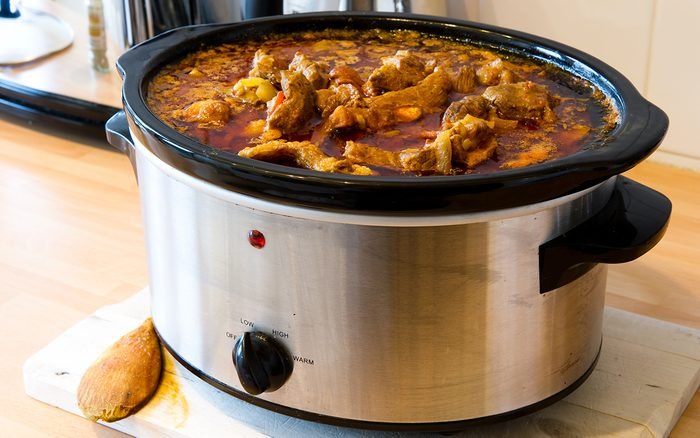
Yes. Slow cooking causes the ingredients to meld together and become more balanced, making the food taste better. However, the you must season the individual ingredients well, to begin with, and you should always use broth instead of water in recipes.
Obviously, some individuals believe this, even though my wife and others believe the contrary. It all boils down to what’s being cooked, the quality of the ingredients, the amount of spice, and whether it’s being cooked with water or broth at the end. Slow-cooked cuisine has the advantage of allowing the ingredients to settle and blend for a long time.
I guarantee that your Italian grandmother understands the concept of slow cooking because she simmers her gravy all day. She understands that flavors take time to develop and that when cooked for a long time at a low temperature, the flavors blend in a way that a 30-minute dish simply cannot.
However, there are a few things that help slow cooker food taste better:
- Seasoning to perfection
- Using meats with a higher fat content (lean meats get tough when slow cooked)
- Before putting your veggies and meats in the slow cooker, sauté them first.
- Not drowning your food by entirely submerging it with liquid.
In a slow cooker, should the food be covered with liquid?
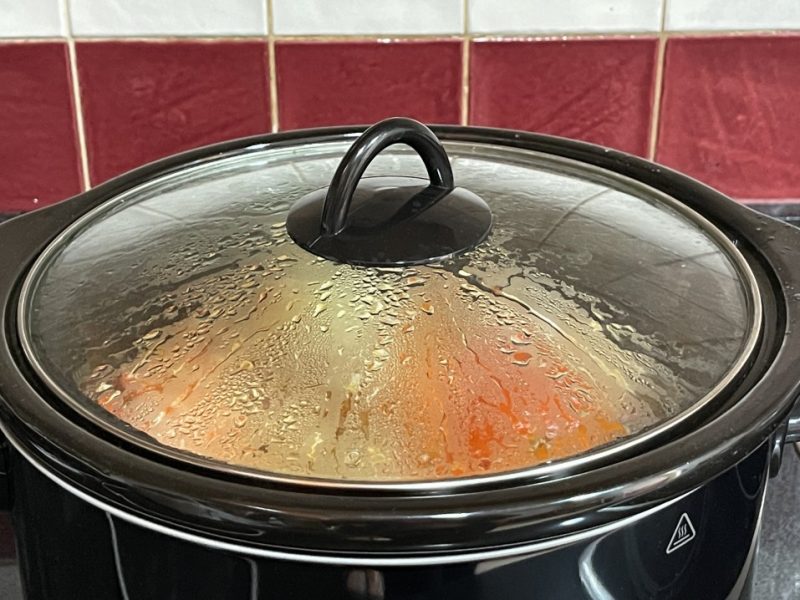
No, for food to be properly cooked in a slow cooker, it does not need to be covered, and it usually requires some liquid to create steam and preserve the meal from drying out. Because the Crock-Pot is covered with a lid, the slow cooker works by heating the entire vessel and trapping the heat and moisture inside.
As a result, food can be cooked in or out of the cooking liquid.
However, you don’t want to use so little liquid that it evaporates, causing the food to adhere to the bottom of the slow cooker and burn.
Scorching occurs when food dries out too much and, in this case, burns to the bottom of a pot or slow cooker. When food burns, it tastes scorched; it has a smoky flavor, but it’s not a pleasant one.
You’ll want to experiment with how much liquid to add to your Crock-Pot through trial and error.
If you use too little, you risk burning the meal, as I already stated. If you use too much, you’ll effectively be boiling the food, which is the blandest way to cook meals. I prefer to have roughly a third of the meal covered in liquid, and I only cook with broth or a sauce rather than water.
Is it possible to overcook food in a slow cooker?
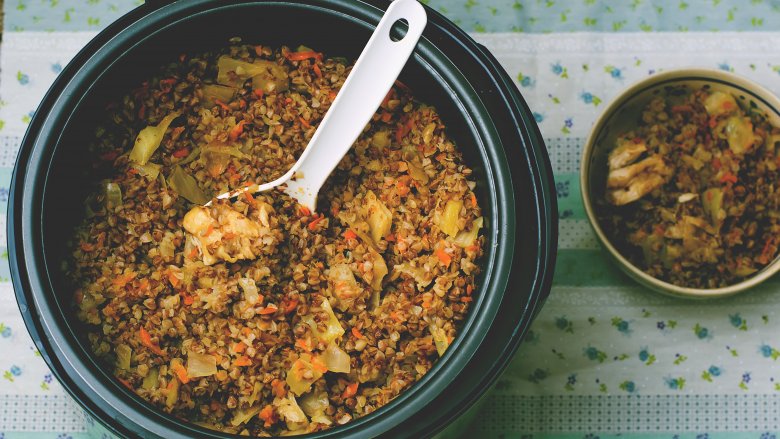
Yes. Vegetables that have been cooked for too long might become mushy and soggy. With too much cooking time, leaner meats might turn dry and rough.
While no one will object to a brisket that is too tender or pulled pork that is too fall-apart, mushy vegetables aren’t much fun to eat. Unless you’re cooking refried beans, mushy beans aren’t a good choice. Cooking leaner meats for an extended period isn’t necessary because the flavor and tenderness of the meat come from the fat rendering.
Because lean meats contain less fat, they are more likely to become rigid and stringy when cooked for an extended period. That’s why most slow cookers feature a high and low-temperature setting, as well as options for cooking times of 4, 6, 8, and even 10 hours.
After the stated cook time has passed, the fancier ones will automatically switch to “keep warm” mode. So consider what you’re cooking and how much time it will take to develop flavor and finish cooking. Don’t just leave it on for however long you’ll be gone, and don’t turn it up to high unless the food you’re preparing indeed requires it.
When in doubt, stick to amazing recipes with 4.5 ratings or higher, and read the comments for any helpful hints or complaints.
How to make a slow cooker more flavorful
Here are some helpful hints for getting extra flavor out of your slow cooker:
Begin with fresh, high-quality ingredients.
Each dish component should be sautéed separately in a skillet (you’re not attempting to cook everything thoroughly; caramelize it to add flavor).
Deglaze your Sauté pan with some wine or broth, scraping all the stuck-on bits and adding it to the slow cooker (deglazing means to remove and dissolve the browned food bits that stick to the bottom of a cooking pan by using up to 1/2 cup of wine or broth) Make sure to use broth rather than water as your cooking liquid.
If you use too much liquid, the liquid will not be able to cook down. Cooking reduces the amount of sugar in the food and enhances the flavor.)
To avoid overcooking, ensure your Crock-Pot is set to the appropriate duration and temperature.
In the end, your slow cooker CAN produce delicious results.
Great ingredients are the foundation. “There is no substitute for the best,” stated renowned chef James Beard once. Food can’t be good if you create it with low-quality ingredients that are disguised with a lot of taste. Using the most significant available ingredients and wasting nothing is true thrift.”
To put it another way, no amount of spice or condiments can disguise a lousy ingredient selection or subpar meat or vegetables.
As I previously stated, fattier pieces of meat are preferred when cooking for an extended period of time, as thinner slices become dry and stringy. One method to include convenience into your meal routines is using your Crock-Pot, but another is using Instant Pots and other pressure cookers.
Is it possible to use dried spices in a slow cooker?
Yes, dried spices can be used in a slow cooker, but they should be used sparingly. Beyond salt and pepper, great cooks rarely use dried spices, and they use fresh herbs to create delicious flavors.
A mirepoix is the foundation of the best slow-cooker recipes. Mirepoix, plainly a French phrase, is merely a sauté of onions, carrots, and celery that serves as a foundation for dozens of recipes.
While you can use dried spices in a Crock-Pot, you should use them sparingly.
Dried spices have a more concentrated (and altered) flavor compared to their fresh counterparts, and slow cooking only enhances that concentration and alteration.
This is especially true if you’re utilizing spicy ingredients like chili powder.
As your slow cooker churns all day, the heat can build up, and what you thought was a small amount of chili flake can turn into a spicy final dish.
When should you add fresh herbs to a slow cooker?
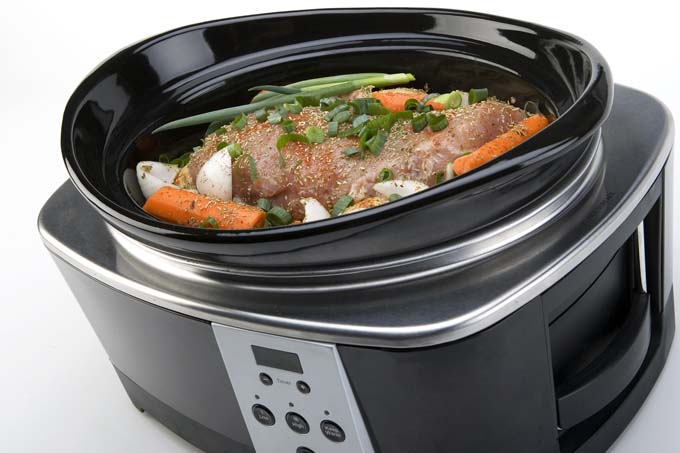
To get the most flavor out of fresh herbs, add them in the last 45-60 minutes of cooking in a slow cooker. If you add them at the beginning of the cooking process, their flavor will be nearly gone by the time you consume it. Fresh herbs are an excellent way to add flavor and freshness to a dish in a way that dried spices simply cannot.
There’s a reason why some of the world’s most delectable cuisines, such as those from France, Italy, Thailand, and Vietnam, make heavy use of fresh herbs. Ideally, you wouldn’t think of making pesto with dried basil (ideally), but fresh basil pesto is incredible. Fresh Vietnamese spring rolls with cilantro, mint, and basil are also delicious.
However, if you toss those fresh herbs into a slow cooker and then leave for work for 10 hours, you will loose all of that delicate flavour. So, do yourself a favor and toss those in as soon as you come home, just before you sit down to dine. You may even prepare them ahead of time and store them in the fridge to make things easier. However, the freshness of adding them right at the end can’t be beaten, and it’s still a method to improve the flavor of simple slow cooker food! Of course, a great kitchen requires some fantastic tiny kitchen appliances, such as a slow cooker.
Did I answer all of your questions regarding why slow cooker food can be bland?
Slow cooker cuisine does not have to be bland, and you can strike a balance between convenience (having your meal cook while you sleep or are at work) and flavor (having your meal cook while you sleep or are at work).
So, in this piece, we looked at why slow cookers and the dishes they make receive such a poor rap.
We looked at some of the most typical blunders individuals make while utilizing them, leading to bland, flavorless meals. Then we looked at a few terrific options that can take your flavor to the next level without sacrificing too much convenience.
So, if you’ve ever wondered why slow cooker food tastes bland, now you know. Now you know it doesn’t have to be that way!











